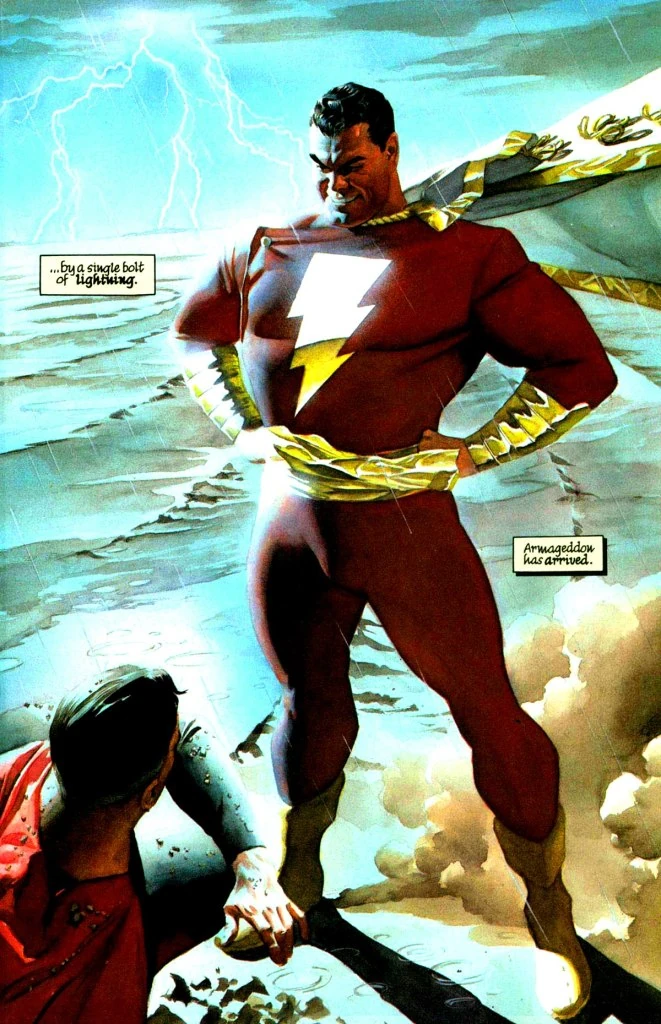

Tony Stark, an arms dealer turned altruist, the paranoid hero who selfishly wants to defend the entire world in whatever way he sees fit.

Steve Rogers would eventually be the first to stand up against the US government during Civil War, in militant protest against the governmental regulation of superheros.

Bruce Banner, the classic werewolf with a twist: his inner monster may actually be the core of his personality.

This one? Again?
Any comic book storyline that sounds familiar to you, specifically character arcs, is probably littered with deconstructionist elements. The breaking down of a hero into its most basic form, and exposing the raw meat underneath, be it through making that hero uphold his personal morals in the face of the thing he stands for turning against him, or by turning a desire to help into an obsessive and possessive need.
Enter Shazam.

Let’s just get one thing straight: Shazam was the original Captain Marvel, before DC or Marvel comics even existed enough to matter. He was Captain Marvel when he was fighting crime, and his family of heroes were known as the Marvels. Nowadays, Shazam, his all-time catchphrase with new acronymal meaning. Does it bother me?
Not really…
Kinda
Whatever
Now, in the 40s when the character fought bank robbers and outrageous super villains, a 14 year old on the front lines was no big deal, and therefore not inherently prone to deconstructionist tropes. However, in the current comic climate, and in the wake of books like The Brat Pack the roles of children IN comics have become a bit more purposeful as tools to analyze and deconstruct human and heroic nature.
To really get the point across, just see what Superman does to Shazam in Injustice after he stands up to the then tyrannical Man of Steel.

The most recent DC films have taken the serious angle, showcasing the grittier parts of comic books, and so to see a 14 year old boy doing the same thing as, say, Slipknot, who gets his head blown off in Suicide Squad may be a bit jarring. That fact in itself gets people used to the fact that these characters can and DO experience some dark enemies and situations, and opens them up to more abstract ideas pertaining to modern heroicism. The flip side to that coin will come when Black Adam starts enslaving people, and Shazam has to kill him in order to stop it. I’m not saying that will happen at all, but the potential here is limitless.